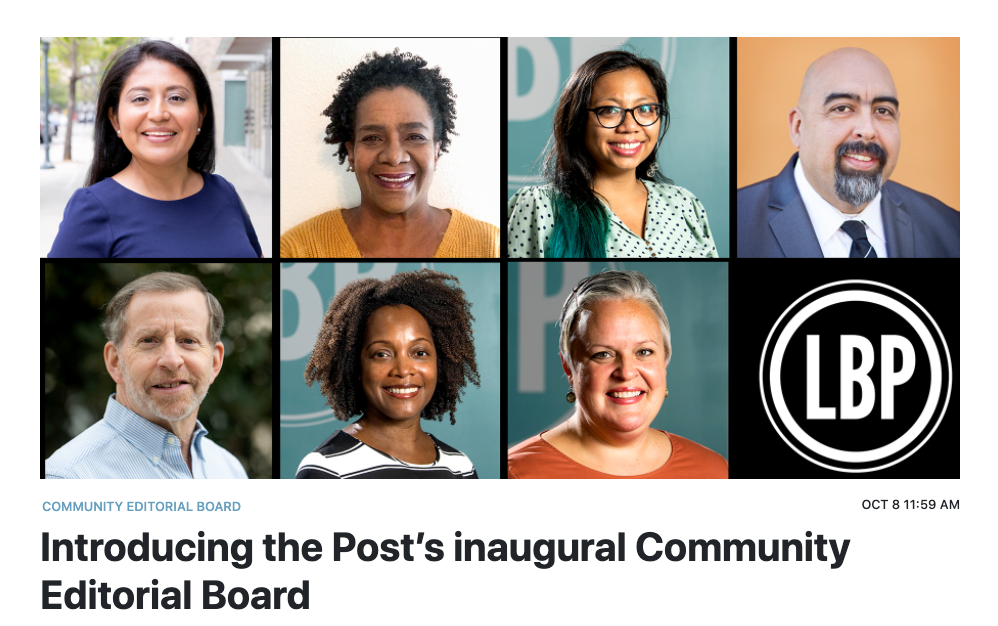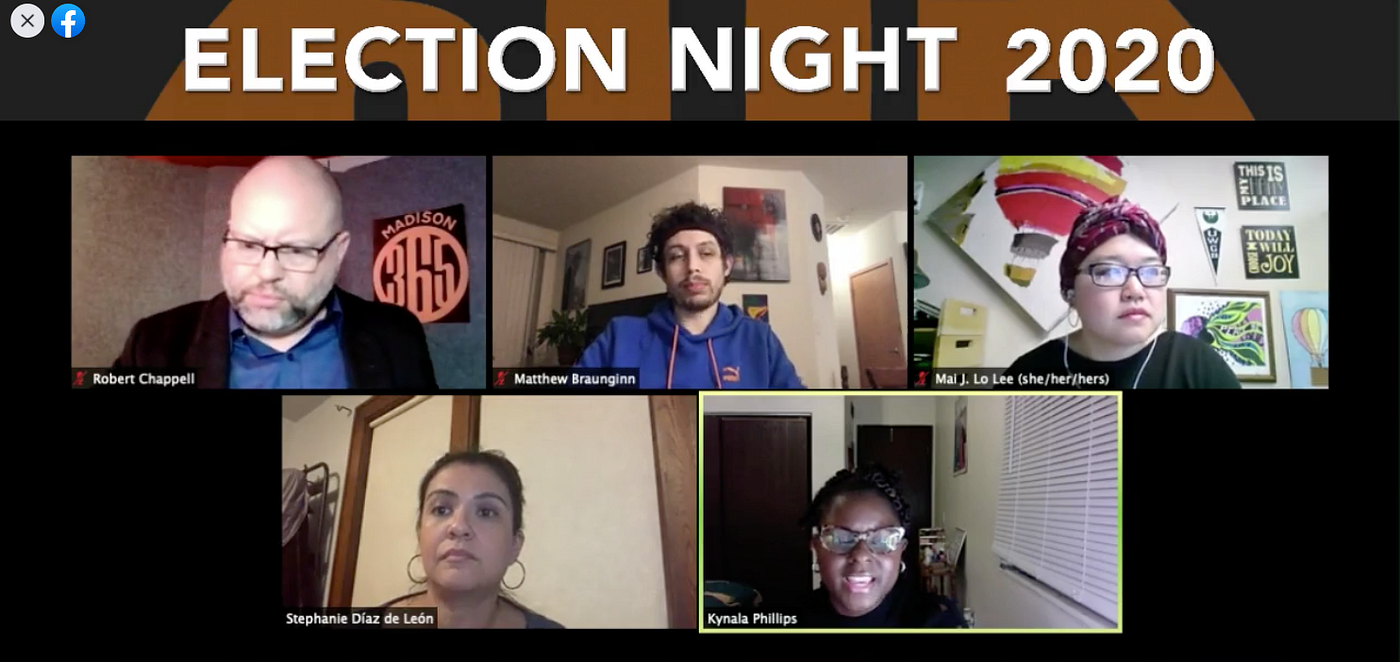Here are the Winners and Losers of Local Election Coverage in 2020
The 2020 election isn’t quite behind us yet (and Iowa’s 2nd Congressional District seems determined to keep it that way). But it’s not

The 2020 election isn’t quite behind us yet (and Iowa’s 2nd Congressional District seems determined to keep it that way).
But it’s not too soon to declare a few winners and losers when it comes to this year’s local media coverage.
Note: The “winners” here are the innovative approaches to reporting, storytelling, and engagement that we saw LION members and other local newsrooms use to better serve their communities this election season.
And the losers? They’re the old habits and tired tropes that continued to plague local media coverage in 2020, hopefully for the last time.
WINNER: The citizen’s agenda
The president’s Twitter feed might have dominated cable news coverage again, but many local news organizations chose a different assignment editor this year: their readers.
Washington City Paper began its 2020 election coverage by asking readers what issues they wanted local politicians to focus on in the coming years.
Santa Cruz Local interviewed more than 200 local voters for a podcast series about their priorities and questions.
And Crosscut embedded a widget at the bottom of stories to collect questions and coverage suggestions, which revealed that “what seems like nuts and bolts” to many journalists is actually what many voters say they need.

In all, dozens of newsrooms partnered with Hearken and other collaborators on “Citizen’s Agenda” projects that centered the voices, questions, and perspectives of voters.
One of those newsrooms, WBEZ, used the Citizen’s Agenda framework to better understand civic information needs for the Chicago residents who’ve been hardest-hit by COVID-19.
In partnership with local community organizations, WBEZ collected more than 2,100 survey responses leading up to the election, nearly half of which came from people living in ZIP codes with the highest COVID-19 case and death rates and the highest rates of first-time unemployment benefits claims since March 1.
These responses informed WBEZ’s reporting on issues like health care access and police reform, and they demonstrated the need for stories like a Field Guide to Chicago Government & Politics, which addressed confusion about the responsibilities of local government.
The engagement also helped produce some of WBEZ’s highest-performing election content — like this FAQs explainer about ballot dropboxes — while reaching and reflecting communities that have often been underserved by local news.
LOSER: Local news endorsements for president
The Denver Post, the Arizona Republic, and dozens of other local news organizations decided not to make presidential endorsements this year.
Next election cycle, everyone else should join them. (This is already a standard practice in much of local publishing, because nonprofit newsrooms are prohibited by law from endorsing political candidates.)
It’s not just that endorsements in high-profile national elections rarely impact the outcome (unlike in local or state races, where they still appear to matter).
The bigger problem with presidential endorsements is that they feed into the perception that news organizations are partisan, even if the “editorial boards” making those endorsements are independent from the newsroom.
As the Pittsburgh Post-Gazette learned the hard way, many Americans don’t know what an editorial board is or how it works, and they view endorsements that they disagree with as a stain on the entire brand.
That’s why publications like the Spokesman-Review have already decided to ditch presidential endorsements since Election Day, and why other local newsrooms are experimenting with alternatives to the traditional editorial board.
For example, the Long Beach Post created a community editorial board this year as a way to hear from people in “different parts of the city, with different life experiences, different reactions to the way the city’s decisions are made, [and] different socioeconomic backgrounds.”
The inaugural board includes seven community members (chosen from a pool of nearly 150 applicants), and it works independently of the newsroom to write joint editorials and individual op-eds on issues of public interest.

WINNER: Voter guides for downballot races
It turns out that covering obscure local elections isn’t just a good public service. It’s also an effective way to grow your audience.
As I reported earlier this month, the nonprofit news site City Limits learned that lesson from its New York City judicial ballot guide, which received six times more traffic than its other top posts in October.
Surprising? Maybe it shouldn’t be.
These unglamorous local races — from judicial seats to water district commissioners — appear on almost every ballot in the country, but many legacy news outlets tend to overlook them as they pile on higher-profile races.
That’s creating an information gap for voters who want to be informed before they complete their ballot, and small local news sites might be perfectly situated to meet it.
LOSER: Horse-race election coverage
For all the attention they get on Twitter, public opinion polls don’t tell your audience anything about the candidates, what they believe in, what they’ll prioritize in office, or what those priorities would mean for their lives.
And despite Nate Silver’s best data science, the polls don’t even do a good job predicting who’s going to win.
That’s one reason why many local newsrooms focused their attention elsewhere this year, from pushing back against misinformation to explaining the process of voting.
Here are just a few examples, courtesy of Mark Glaser and the Knight Foundation:
- ProPublica expanded its Electionland project to provide months of reporting on voting access and mail-in-voting laws.
- The Philadelphia Inquirer created a voting how-to guide that it translated into five languages.
- Wisconsin Watch launched a yearlong series focused on election security, misinformation, and voter disenfranchisement.
- Chalkbeat raised nearly $1 million to launch Votebeat, a pop-up newsroom that placed reporters in newsrooms around the country to cover election integrity.
Horse-race election coverage probably won’t ever go away, as it’s too addicting for a certain segment of the population and too lucrative for the national media’s pundit-industrial complex.
But after consecutive polling misses in 2016 and 2020, the general public’s trust and interest in this coverage may continue to decline, especially if local newsrooms can continue to provide a compelling alternative.
WINNER: Live video streams for local results
Steve Kornacki and John King weren’t the only political journalists providing live results and analysis deep into the night on Election Day.
The Illinois Eagle, Madison365, and other local newsrooms also hosted livestreams this year to break down races and interview winning candidates. And even if viewership didn’t break the charts, there were still positive takeaways.
Robert Chappell from Madison365 says planning and producing the live broadcast was a good experiment for the newsroom, and possibly the start of a new revenue stream.

“It proved that we could do it,” he said. “We dropped in our own fundraising ads, so we can now demonstrate to advertisers and funders that this is a thing we can do and you can have your ads on here.”
Chappell also thinks that local livestreams could perform better in non-presidential election years, when the national results aren’t quite so captivating, or in years when the local races are especially closely contested.
“We’ve had school board races where people were refreshing our page watching for results,” he said, “because TV isn’t covering those.”
Sign up for the weekly newsletter
Join the LION mailing list to get our weekly roundup of opportunities and resources for news entrepreneurs. View our most recent issues.
Related Articles
BoiseDev’s winning secret to selling newsletter ads: Only local news, only local ads
The site earns 60 percent of its advertising revenue through its high-open-rate email projects, in partnership with local ad agencies.
AI adoption: How Lede AI helps small publishers quickly generate content readers love
Helping news organizations leverage artificial intelligence with a tool that puts their readers and staff first
Social is down, newsletters are up: How audiences are finding LIONs in 2024
Changes to social media and search prompt publishers to shift strategy.
